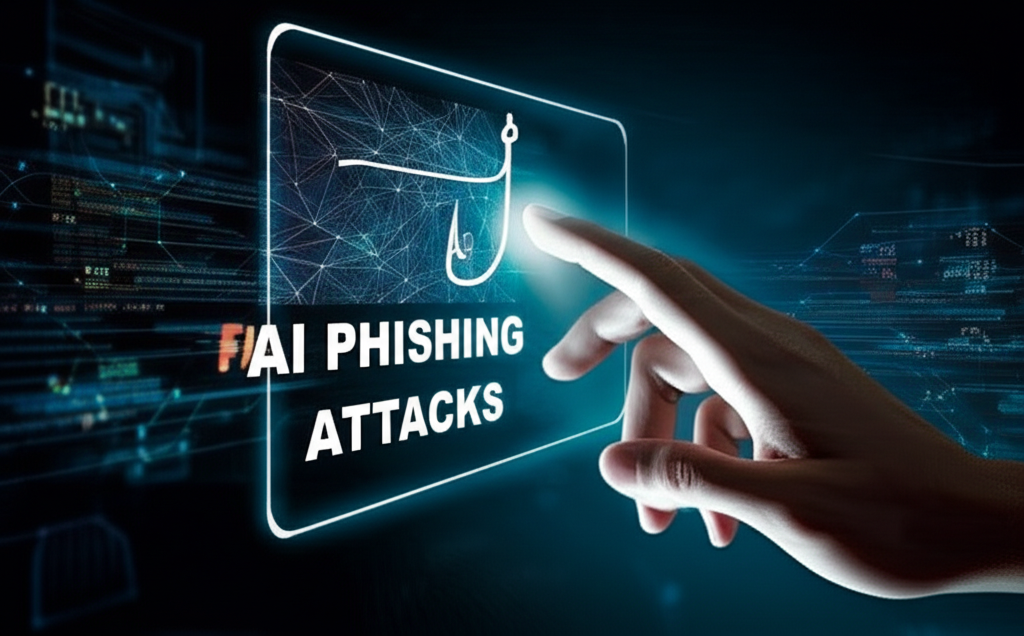AI Phishing Attacks – An Evolving Threat
The Rise of AI in Cybercrime: A New Era of Phishing
Phishing attacks have long been a cornerstone of cybercrime, preying on human vulnerabilities to gain unauthorized access or sensitive information. From generic email blasts to highly targeted spear-phishing campaigns, these deceptive tactics have continually evolved. However, the advent of Artificial Intelligence (AI) and Machine Learning (ML) is pushing phishing into a new, far more sophisticated and dangerous realm. AI-powered phishing attacks are not just an iteration; they represent an evolving threat that demands heightened vigilance from individuals and organizations alike.
How AI Supercharges Phishing Tactics
Traditional phishing relies on volume and basic social engineering. AI, however, provides cybercriminals with unprecedented tools to craft highly personalized, convincing, and scalable attacks. Here’s how:
- Hyper-Personalization at Scale: AI algorithms can analyze vast amounts of publicly available data (from social media, news, company websites) to create highly personalized messages that resonate deeply with the target. Gone are the days of generic “Dear Customer” emails; AI can generate emails that sound like they’re from a specific colleague, manager, or trusted brand, tailored to an individual’s context and interests.
- Sophisticated Language Generation: Large Language Models (LLMs) like GPT-4 can generate grammatically perfect, contextually appropriate, and emotionally manipulative text. This eliminates common grammatical errors that often give away phishing attempts, making fake emails, messages, and websites virtually indistinguishable from legitimate ones.
- Deepfake and Voice Cloning: Perhaps the most alarming development, AI can now create highly realistic deepfake videos and voice clones. This enables vishing (voice phishing) and deepfake scams where criminals impersonate executives or family members, demanding urgent transfers or sensitive information over a call or video, exploiting the trust we place in visual and auditory cues.
- Dynamic Evasion Techniques: AI can be used to analyze security measures and adapt attack vectors in real-time, making it harder for traditional detection systems to flag malicious content. This includes generating unique phishing URLs for each target, making blocklisting less effective.
Evolving Types of AI-Powered Phishing
The core methods of phishing remain, but AI dramatically enhances their efficacy:
- AI-Powered Spear Phishing: Instead of manual research, AI scours social media, professional networks, and corporate databases to build detailed profiles of targets. It then generates highly convincing emails that mimic known contacts, internal communications, or urgent business requests.
- Business Email Compromise (BEC) 2.0: AI makes BEC attacks even more insidious. By analyzing past email conversations and writing styles, AI can generate emails that perfectly mimic a CEO’s tone or a finance department’s typical requests, leading to fraudulent wire transfers or disclosure of sensitive data.
- Advanced Vishing (Voice Phishing): With voice cloning technology, attackers can mimic the voice of a CEO, a bank representative, or a loved one. They call victims with urgent requests that sound incredibly legitimate, exploiting emotional triggers or authority.
- Deepfake Scams: While still emerging, deepfake technology can create realistic video calls where criminals impersonate someone known to the victim. This adds another layer of trust and urgency, potentially leading to significant financial losses or data breaches.
- AI-Optimized Smishing (SMS Phishing): AI can craft personalized text messages that appear to come from trusted sources (banks, delivery services, government agencies), using current events or personal details to make the SMS highly convincing.
The Broader Impact: Why This Threat is Significant
The scale and sophistication AI brings to phishing means:
- Increased Success Rates: Highly targeted and convincing attacks are more likely to bypass human scrutiny and security filters.
- Erosion of Trust: As distinguishing real from fake becomes harder, trust in digital communication channels will diminish, impacting business operations and personal interactions.
- Faster Attack Cycles: AI can automate much of the reconnaissance and content generation, allowing attackers to launch more campaigns more quickly.
- Greater Financial and Reputational Damage: Successful AI phishing attacks can lead to massive financial losses, intellectual property theft, and severe reputational damage for organizations.
Protecting Against the AI Phishing Wave
Combating AI-powered phishing requires a multi-layered approach:
- Enhanced Employee Training: Beyond traditional awareness, training must include recognizing sophisticated AI-generated content, deepfake indicators, and the importance of verifying unexpected requests via alternative, trusted channels (e.g., a phone call to a known number).
- Multi-Factor Authentication (MFA): Implement MFA across all critical accounts. Even if credentials are stolen via phishing, MFA provides an additional barrier.
- Robust Email Security Solutions: Deploy advanced email gateways with AI-driven threat detection capabilities that can identify subtle anomalies in email headers, sender behavior, and content.
- Strong Password Policies & Password Managers: Encourage unique, strong passwords for all accounts and the use of reputable password managers.
- Regular Software Updates: Keep operating systems, applications, and security software updated to patch known vulnerabilities.
- Incident Response Plan: Have a clear plan in place for reporting and responding to potential phishing incidents promptly.
- Zero-Trust Architecture: Adopt a zero-trust model where no user or device is inherently trusted, requiring verification for every access request.
Conclusion: Staying Ahead in the AI Arms Race
AI phishing attacks represent a formidable and rapidly evolving threat. While AI offers immense benefits, it also provides powerful tools for cybercriminals. The key to defense lies in continuous education, robust technological defenses, and a healthy skepticism towards unsolicited digital communications. Organizations and individuals must adapt their security strategies to stay ahead in this new, AI-driven cybersecurity landscape, understanding that the fight against phishing has just become significantly more complex.







